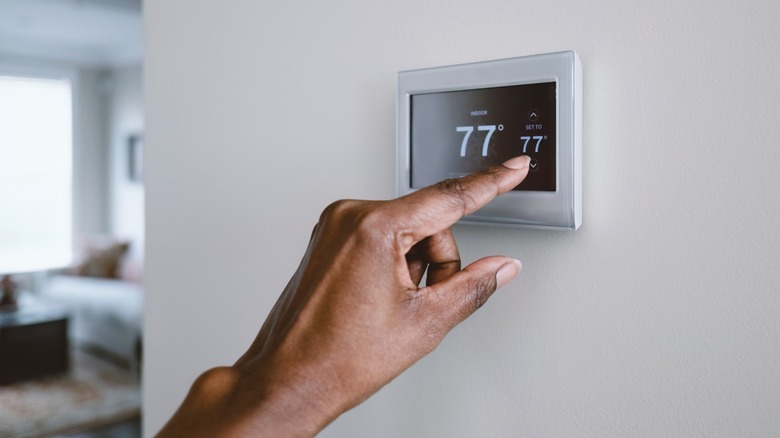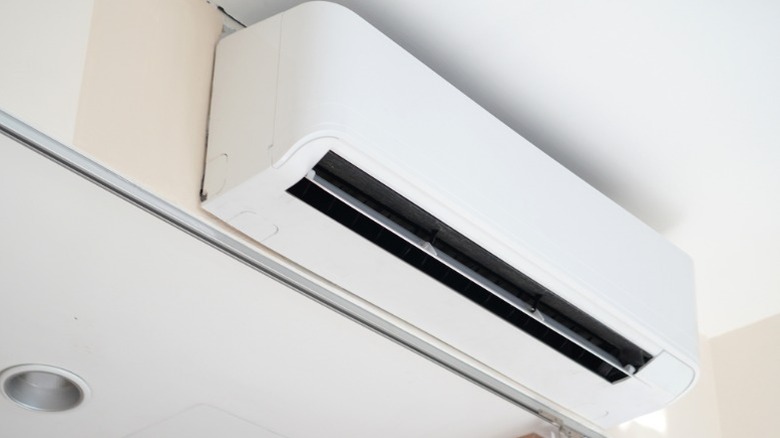Can Leaving Your Air Conditioner On Prevent Mold From Growing?
For many homeowners, moisture and mold are among their most stress-inducing concerns. It only takes a day or two for mold to grow when the relative humidity rises above 60 percent, forcing us to constantly watch for new issues. When you live in an area with high humidity, keeping your home comfy, healthy, and safe all depends on the tools you use. Efficient, hassle-free solutions aren't abundant. You can use dehumidifiers as needed, setting them on "auto" to keep the air fresh. But even these need regular intervention, like when buckets fill or you need to move them to different rooms. For the most convenience, your best asset may be one you likely already use every day when the house gets a little too toasty — the air conditioner.
Air conditioners manage almost everything climate-related in the house. You may not realize it, but secondary to being the home's main temperature control, your central air unit also acts as a large dehumidifier. As warm air gets sucked through the vent and passes over the evaporator coil, the rapid cooling causes moisture in the air to condense on it. The collected moisture then falls to a drip tray and filters through a line away from the home. Different types of air conditioning units can help maintain humidity levels in any area of the house or garage. And should you go on vacation or leave your house for long periods, knowing this can significantly impact whether you return to a moldy home.
How your air conditioner can prevent mold
Mold thrives in damp, stagnant air, which are conditions an A/C unit can efficiently handle. When running at its peak during the summer, an air conditioner can remove up to 20 gallons of water from the air. Meanwhile, the blower creates circulation as it sucks in and expels air. Stale pockets where moisture might build up become less of an issue. Put it together and mold has fewer chances to settle in when the air conditioner is running. Using a few key tips, you can improve how your air conditioner stops mold from showing up in common hotspots.
If nobody will be home for a few days, turn off your lights, appliances, and electronics, but keep your A/C fan set to "On" to keep the air moving. If the home is frequently empty, consider upgrading to a smart thermostat. Many products let you connect and check your home's indoor climate with smart devices. With convenient humidity and temperature updates, you can adjust the settings remotely to keep the air fresh and stop mold from spreading. Since mold likes warmer temperatures, setting your thermostat to around 68 to 72 degrees Fahrenheit will make it harder for it to grow. It's practically impossible to keep mold from getting into your home, but with proper ventilation, frequent cleaning, and smart use of your air conditioner, you can keep everyday mold from ruining your health and your home.

